Devlog #4: How are we paying for this?
So let’s address the elephant in the room, money. How are we paying for all this?
Game development isn’t free, even if you choose to do all the work yourself there’s the value of your time and the opportunity cost of what else you could have done with it. As I’ve mentioned before, I don’t bring a traditional game development background to the project. I’m not a programmer or artist, and I think if I tried to do everything myself it would take me too long to learn the skills and the final product wouldn’t be up to my (or my audiences) quality standards. So, if I’m not willing to do it all myself, the only other thing I can do is pay people to do the things I can’t.
From the beginning, one of my goals was not just to make a video game, but to start a business, to pay people for their work and give people who might otherwise be un- or under-employed the chance to utilize their skills and contribute to something. Especially in the context of the COVID-19 pandemic and uncertainty around work, the economy, and reliable employment, I thought it was important to provide stable income as much as possible. I didn’t want to be an “idea guy”; the all too common trope in video game development circles who recruits people with the promise of some phantom “rev-share” that will likely never materialize, and who doesn’t contribute anything to the project other than lofty, but poorly thought out ideas.
Before I decided to start a business and before I knew what kind of business I wanted to start, I set aside $50,000 knowing I’d need some seed capital regardless of the project. So this is our budget, $50,000 of my own personal funds that I worked, saved up, sold personal items, and invested to earn.
But $50,000 isn’t a lot of money in game development, so what are we going to get for our money? I knew that I couldn’t make the game I wanted for just $50,000, that the total budget would be significantly more and require some outside investment. I needed to research what other funding mechanisms were available, what the requirements of this funding were, and how we could leverage our limited funds to meet these requirements, to give us a shot at making the game we wanted to make.
So, I set about learning about the industry and the requirements of the various funding mechanisms, publishers, angel investors, government grants, crowdfunding, and others. I attended some “business of gaming” talks put on by industry veterans like Jason Della Rocca and Mike Rose, and read up on the business of gaming, game discoverability, and marketing, from folks like Simon Carless at Game Discover Co. and Chris Zukowski from How to Market a Game. I also read articles and watched GDC talks about publishers, funding, crowdfunding, and the business in general and looked at publisher websites and Kickstarters best practices.
Through all of this I learned that especially as a new studio I needed to establish the credibility of what we were doing, give confidence to potential funding partners and the general public if we chose to do crowdfunding, that the game was more than just an idea and that we were taking concrete steps to get the game made. Most funding partners require a playable demo, a vertical slice of gameplay that demonstrates the core gameplay loop and shows off the art style and other key pillars of the game, in this case the dialogue, combat, and player choice and consequence.
So I wrote a game design document for this playable demo, outlining the various gameplay mechanics and what would be needed in terms of assets to produce it. I talked to freelancers and other industry contacts I’d built, showed them what I was working on, and asked for advice and feedback to remove as many unknowns as I could. With a defined scope, the right talent, and a commitment to prudent scope control and project management I thought we had a good chance of producing what we wanted and staying in budget, which would give us a playable demo that we hoped could attract additional funding.
So with that we set to work.




